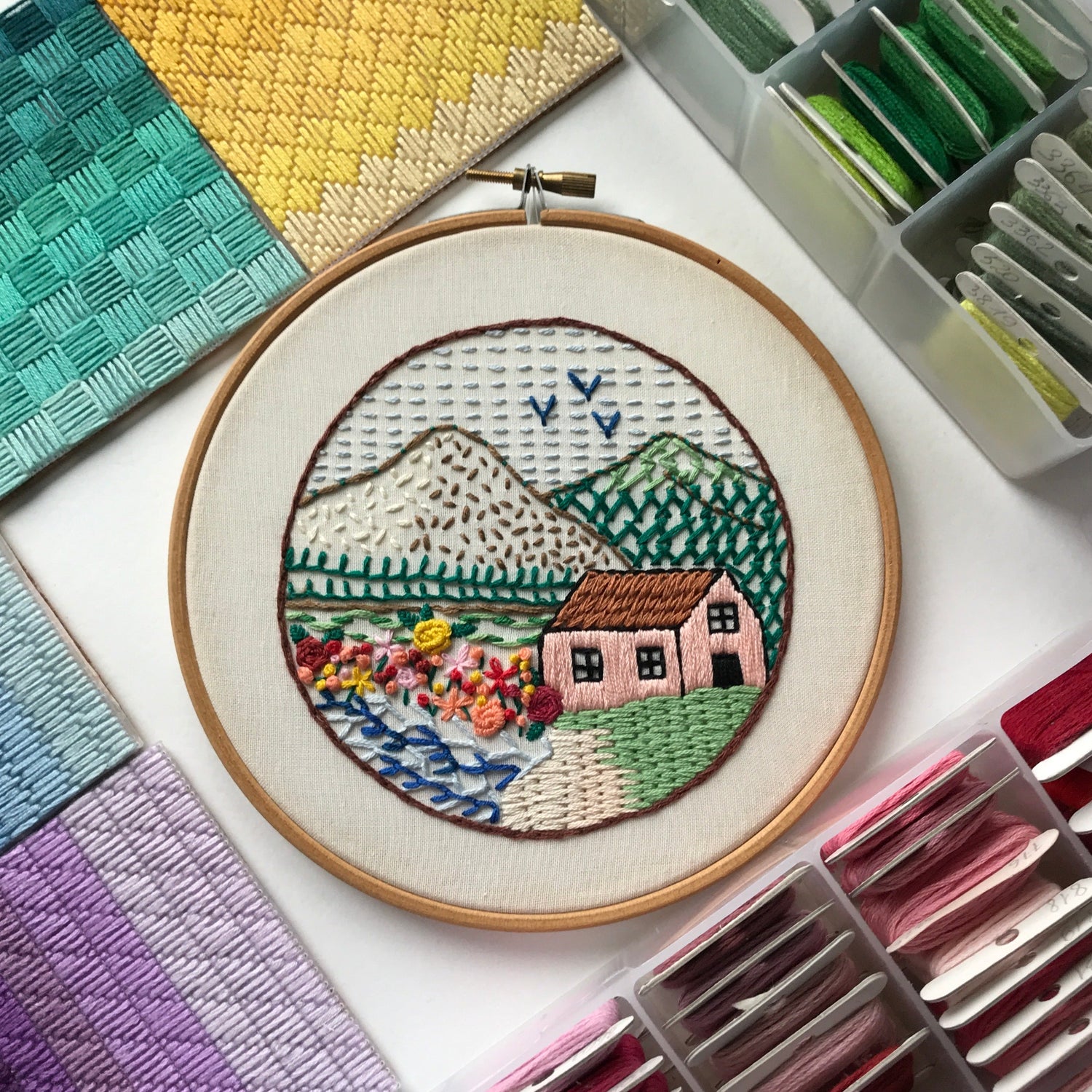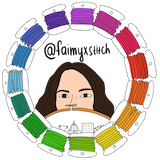Thread & Fabric Guide
Choosing Thread and Fabric for Hand Embroidery
The right materials make all the difference in your embroidery projects. Here's what you need to know about selecting thread and fabric.
Embroidery Thread
You can use almost anything that fits through your needle, especially if you're experienced or enjoy experimenting. Here I'm only reviewing the common choices.
DMC Stranded Cotton Mouline Special
The most popular choice for hand embroidery. Available in hundreds of colors. This is the one that I use for my patterns.
It comes in skeins of 6 strands twisted together. Using fewer strands gives thinner lines and smoother stitches, while using more strands creates thicker lines with more coverage and volume.
When instructions say "use 2 strands," it means you should separate 2 strands from the skein, thread them into your needle, and make a knot at the end of those 2 strands. This way, you stitch with exactly 2 strands. But if you take 2 strands, fold them in half, and knot all 4 ends, you’ll actually stitch with 4 strands.
The number of strands you choose depends on your design and fabric. For small, detailed stitches on cotton, use 1–2 strands. For filling areas on cotton, go for 2–3 strands. For thick, bold stitches that stand out, use 4–6 strands.My patterns always say how many strands to use, but feel free to experiment and try new things!
Thread Brands: DMC (pattern colors are for DMC palette), Anchor, Sublime Stitching,Madeira, etc.
Pearl Cotton (Perle)
Non-divisible twisted thread with a lustrous finish. Available in different weights (3, 5, 8, 12). Mostly used for a thicker lines and shapes. Some colors are the same for DMC perle and mouline. So these ones can be used for bigger pieces.

Thread Tips
- Keep thread lengths around 45-50 cm (18 inches) to prevent tangling
- Store thread away from direct sunlight to prevent fading
- If you're not sure where you got the thread, do a test to see if it bleeds. Place in into warm water and then on a piece of white fabric or paper.
Fabric Choices
First, choose a fabric with a plain weave - threads woven evenly in a simple criss cross pattern. This makes transferring patterns or stitching straight lines easier. Next, ensure your fabric is not see-through (you shouldn’t see your hand through it easily) and not stretchy. This helps keep your stitches neat.

When shopping, feel the fabric to check these points. Here are some reliable choices:
Cotton
Durable, easy to stitch, and not stretchy. Cotton muslin or quilting cotton is great. Kona cotton is an excellent option with many colors. Aim for 140–200 g/m² fabric weight.

Linen
Classic embroidery fabric with a beautiful texture. The fabric count usually lower so it's not the best choice for detailed pieces. Choose 28 count or higher.

Cotton-Linen Blends
Combines the best of both worlds - easier to work with than pure linen but with added texture.

Fabric Preparation
- Pre-wash fabric to prevent shrinkage
- Iron fabric smooth before transferring your pattern
- Use a hoop or frame to keep fabric taut while stitching
Color Recommendations
Each pattern includes DMC thread color palette, but feel free to customize with your own colors!
Check out my patterns
-

Beginner Embroidery Patterns
Start here. Simple outlines, a small stitch set, and quick wins to...



